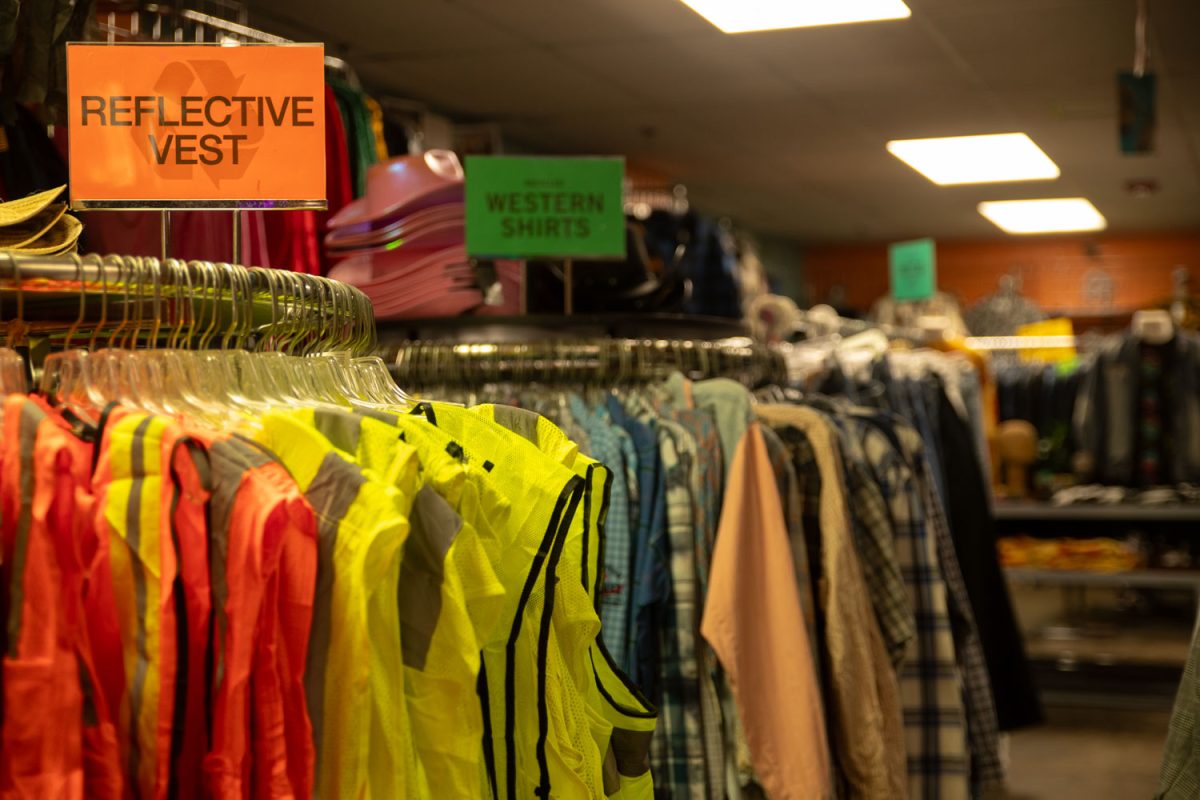Beneath the spooky costumes and ghoulish face paint, an even scarier monster lurks — Halloween waste. Every year, millions of pounds of costumes, candy, and decorations are dumped in landfills across the U.S. What can Iowa City and its residents do to minimize this unnecessary debris?
With 35 million Halloween costumes thrown away each year, the overconsumption of this holiday has run rampant in recent years. On average, a single trick-or-treater generates about one pound of trash. Multiply that by 41 million people every year, and the amount of waste quickly becomes more terrifying than the scariest monster mask.
Historically, trick-or-treating picked up in popularity in the 1930s, and the costumes used were largely made by stay-at-home mothers. Once large corporations and manufacturers stepped on the scene around 1950, costumes transitioned from DIY activities to department store purchases.
Now, everyone from toddlers to college students can find any costume they dream of at the drop of a hat. The only problem is that these costumes are often poorly made with cheap, synthetic fibers that harm the environment.
Many individuals — including college students — buy more than one costume for the holiday festivities, causing the amount of garbage generated to grow with each passing year.
Since it takes anywhere from 50-600 years for the plastic in these costumes to decompose, anything we can do to reduce the amount of waste can have a positive impact on the environment. Ragstock, a clothing store located in Iowa City, aims to help with this problem.
“In our Halloween department, we have half new stuff and then we have half recycled,” Ragstock Manager Brooke Mitchell said. “All of our recycled stuff is actually kept year by year. If it doesn’t sell, then we just backstock it in the warehouse in Minneapolis. We don’t throw it away — it just tries to get sold the next year.”
Buying a costume secondhand, or even purchasing a costume and holding on to it rather than throwing it away, are both viable options this Halloween. However, in order to cut down on waste even more, Mitchell recommends thrifting.
“[My advice would be] secondhand shopping. If you have any useful friends that can sew or add decorations to a costume or anything like that,” Mitchell said. “Even here at Ragstock, just avoid the new and go straight to the recycled.”
On top of stores like Ragstock and Goodwill, platforms like eBay and Facebook Marketplace are great resources for finding a secondhand costume. Repurposing old costumes not only decreases waste but allows for a level of creativity missing in the Halloween section at Target.
With the internet at our disposal, there are thousands of resources to find inspiration for a homemade or sustainably sourced costume. Pinterest, Instagram, TikTok, and many other platforms have vast amounts of content for Halloween.



